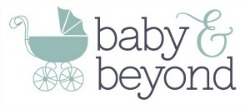Understanding Foremilk and Hindmilk:
A Guide for Breastfeeding Mums
Breastfeeding is a beautiful journey, but it can also come with a lot of questions—especially when it comes to foremilk and hindmilk. You might have heard these terms and wondered how they affect your baby’s satiety, digestion, growth, development, and sleep. Let’s break it down so you can feel confident in your breastfeeding experience.
What Are Foremilk and Hindmilk?
When your baby starts nursing, they first receive foremilk, which is thinner and higher in lactose. As the feeding continues, the milk gradually transitions to hindmilk, which is richer in fat and calories. This natural shift ensures your baby gets both hydration and essential nutrients.
The difference between foremilk and hindmilk isn’t about two separate types of milk—it’s about how the composition of breast milk changes throughout a feeding.
Foremilk
- This is the milk your baby gets at the start of a feeding session.
- It tends to be thinner and has a higher lactose content, which provides quick energy and hydration.
- It may appear bluish or translucent.
- Helps quench thirst and kickstarts digestion.
Hindmilk
- This milk comes later in the feeding session, as your baby continues to nurse.
- It is richer and creamier due to its higher fat content, which supports growth and brain development.
- Provides sustained energy and helps baby feel fuller.
- Helps with satiety and sleep, making babies more satisfied after a feed.
Is One Better Than the Other?
Not at all! Both foremilk and hindmilk are essential for your baby’s health. Foremilk provides hydration and energy, while hindmilk delivers fats and nutrients for growth.
Effects on Your Baby
- Satiety: Hindmilk is more calorie-dense, helping your baby feel fuller for longer. If a baby only gets foremilk, they might seem hungry more often.
- Digestive Issues: An imbalance—too much foremilk and not enough hindmilk—can lead to gassiness, fussiness, and green, frothy stools due to excess lactose.
- Growth & Development: Hindmilk provides the necessary fats for brain development and healthy weight gain. Babies who receive a good mix of both foremilk and hindmilk thrive.
- Sleep: A well-fed baby sleeps better! Hindmilk’s fat content helps babies feel satisfied, leading to longer and more restful sleep.
Foremilk-Hindmilk Imbalance (Lactose Overload)
If a baby gets too much foremilk without enough hindmilk, they may experience digestive discomfort, including gassiness, green/frothy stools, and fussiness. This can happen if feedings are too short or if the baby switches breasts too frequently.
How to Ensure a Good Balance
Breastfeeding is a dynamic process, and your baby will naturally regulate their intake.
Ensuring a good balance of foremilk and hindmilk is key to keeping your baby satisfied and preventing digestive discomfort. Here are some practical tips:
- Let Baby Finish One Breast Before Switching
- Allow your baby to nurse fully on one side before offering the other.
- This ensures they get both the watery foremilk and the fat-rich hindmilk.
- Watch Your Baby, Not the Clock
- Breastfeeding works best when you follow your baby’s cues rather than sticking to a strict time limit.
- If a feeding session is cut short, your baby might get mostly foremilk.
- Avoid Switching Breasts Too Quickly
- If you switch breasts too soon, your baby may not get enough hindmilk.
- If they still seem hungry after one side, then offer the second breast.
- Try Breast Compressions
- A gentle squeeze while your baby is nursing can help move the milk along, encouraging them to get to the hindmilk sooner.
- Monitor Baby’s Nappies and Behaviour
- Signs of too much foremilk: Green, frothy stools, excessive fussiness, and gassiness.
- Signs of good balance: Yellow, seedy stools, satisfied behavior, and steady weight gain.
On this breastfeeding journey every mum-baby duo is unique. Trust yourself, seek support when needed, and enjoy this special bonding time with your little one! 💕
By Paulette Fawcett
Birth and Postpartum Doula
Infant Sleep Consultant
Breastfeeding Peer Support Counsellor


